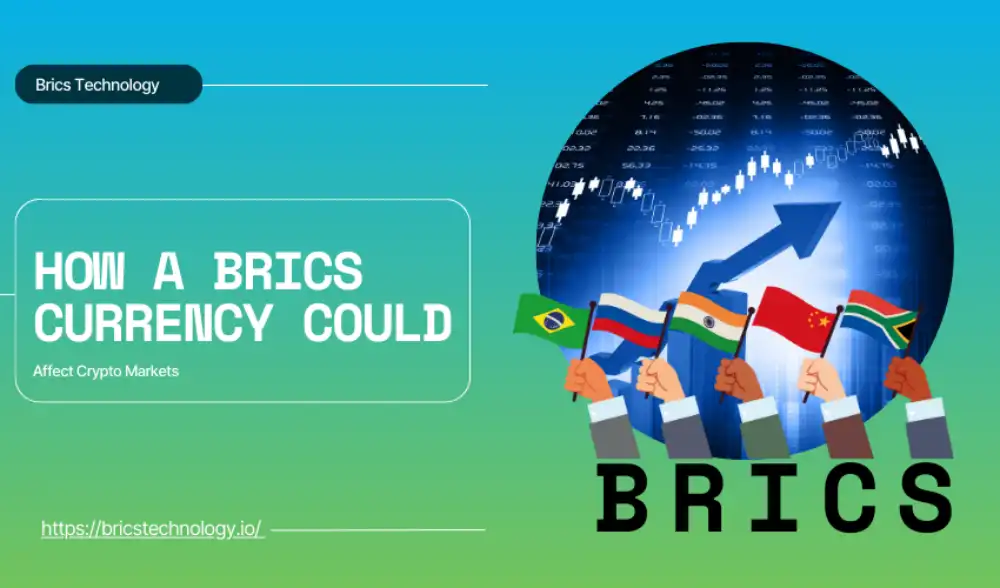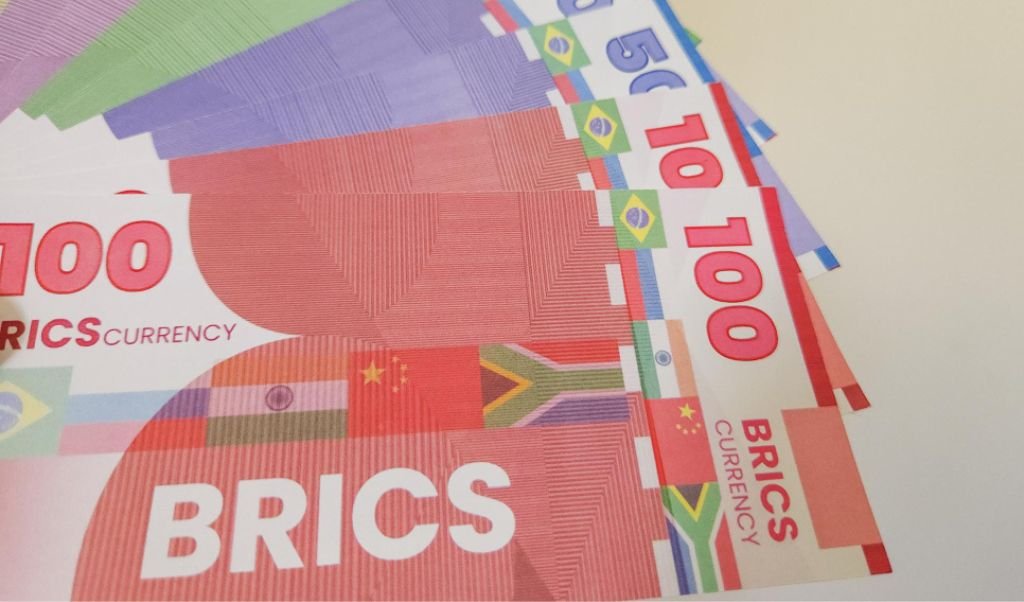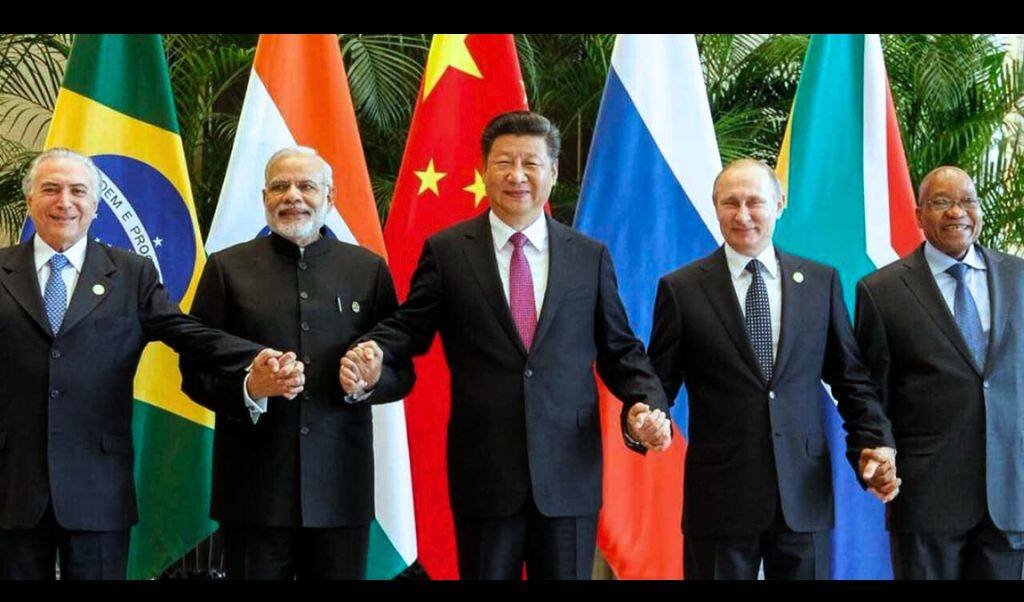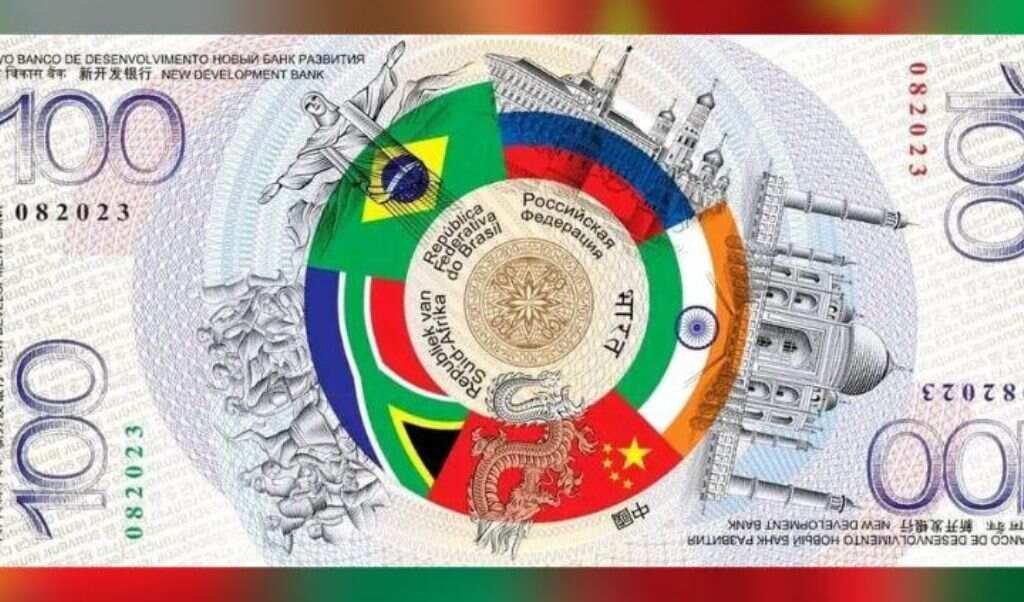What Is BRICS Currency? Simple Answers About the New Global Challenger

What happens when the world’s rising economies no longer want to play by the rules set in Washington?
That question has fueled the rise of BRICS, an alliance of Brazil, Russia, India, China, and South Africa. Founded in the late 2000s, BRICS aims to give developing nations a stronger voice in global affairs.
Together, the BRICS nations control massive natural resources. The founding nations of BRICS shared 40% of the world population, which has increased to 45% with the addition of new BRICS countries to BRICS+. In 2025, the BRICS countries are expected to have a 35% share of the world’s GDP, which is more than 30% of the GDP of the G7 countries.
Their influence has steadily grown, but their reliance on the U.S. dollar has remained a sore spot. That is where the idea of a BRICS currency came in.
The proposal first emerged in the early 2010s, but global events such as
- Sanctions on Russia
- Rising interest rates in the U.S.
- Growing push for de-dollarisation
have pushed it into the spotlight. The currency is more than just money. It is more about independence, leverage, and rewriting international trade rules.
Its purpose is to offer BRICS countries a stable, shared unit of exchange that reduces their dependence on the dollar and strengthens financial cooperation within the bloc.
What Is BRICS Currency?

BRICS is an alliance of a few countries that is trying to create a new currency that the USD does not influence. In recent BRICS currency news, the bloc has reportedly proposed a tentative name for its new currency: “the Unit.” This will be a new form of currency that these countries will use for trade among themselves.
The founding five countries of this alliance are called BRICS. They are exploring creating a shared currency to improve trade among themselves and reduce reliance on the U.S. dollar.
So far, this currency does not exist in any physical or digital form. However, BRICS leaders have been actively discussing how it could work. Some believe it might be a digital currency backed by gold or other natural resources. Others suggest it could be linked to a basket of national currencies.
The main idea is simplifying payments between BRICS nations and protecting their economies from global currency shocks. If introduced, this could change how these countries conduct international trade.
Still, many details are undecided. How the currency will be designed, what it will be called, and who will manage it are still under discussion. However, the growing interest shows that BRICS wants more control over its financial future.
Why BRICS Nations Want a Shared Currency

The idea of a shared currency has gained attention because member countries want more control over their financial systems. Most international trade today is done in U.S. dollars. This gives the United States an advantage and often puts pressure on other economies during global crises.
BRICS nations feel that using their joint currency could protect them from currency fluctuations, interest rate hikes, or sanctions linked to the U.S. dollar system. It would also give them more flexibility in trade deals with each other.
There are several reasons why BRICS countries are exploring this shift:
- Reducing dollar dependence: Many BRICS members want to avoid the risks of dollar-based trade, especially after sanctions on Russia affected its access to global financial systems.
- Supporting regional trade: A shared currency could make trade faster and cheaper among BRICS nations by eliminating exchange rate costs.
- Increasing global influence: Launching a new currency would help BRICS play a bigger role in shaping the future of international finance.
The idea also ties into a broader plan to develop a BRICS payment system. If successful, this system would enable smooth cross-border transactions without relying on Western financial networks like SWIFT.
Although the concept has gained momentum, the BRICS group has clarified that they are not in a rush. They want to build a system that works in the long term and reflects the needs of all members. The plan is less about replacing the dollar overnight and more about creating a second option that gives developing economies more power in global trade.
BRICS Pay: Blockchain Meets Global Payments
BRICS Pay, a decentralized, blockchain-powered messaging system, has been in development since 2018. It’s designed to allow member banks to exchange payment instructions directly in local currencies, bypassing cash, SWIFT reliance, and third-party intermediaries. The system is built around the Decentralized Cross‑Border Messaging System (DCMS), enabling each nation to run its node in a smart, censorship‑resistant setup. Its features include:
- Local currency wallets and integration with national banking platforms
- Interoperability pilots driven by central bank tech units, moving beyond proof-of-concept to regional trial.
Why it matters: If successfully implemented, BRICS Pay could reduce transaction costs, improve speed, and provide financial resilience against potential sanctions. Full deployment across all five nations is still in progress, with pilot phases primarily in 2025–26.
How the BRICS New Currency Will Work

A future currency is still under development. However, experts and policymakers have shared a few possible models. One idea is a digital currency backed by gold or other assets. It is tentatively called “the Unit,” and it will comprise
- 40% of gold
- 60% of the basket of BRICS nations’ currencies
It can help increase global trust and reduce the volatility of fiat money. Another option explored is a unit of account based on a basket of BRICS national currencies, similar to how the International Monetary Fund’s SDR (Special Drawing Rights) functions.
According to Russian lawmaker Alexander Babakov,
“The BRICS currency will be backed not just by gold, but also by other group members’ national currencies and potentially key resources.”
There is also talk of creating a shared payment system to support the new currency. This could be a blockchain-based digital platform that allows real-time settlements across borders. Such a system would work around traditional Western networks like SWIFT, offering more independence to BRICS economies.
The issuance of the currency and its management, whether through a BRICS central bank or a new institution, remain undecided. However, the design will likely reflect each country’s political influence, economic weight, and long-term strategic goals.
How BRICS Challenges the Dollar’s Role in Global Markets
BRICS evolved into BRICS+ with new countries, including Saudi Arabia, the UAE, and Ethiopia, joining the alliance. With its recent expansion, BRICS+ now represents around 45% of the world’s population and includes major economic powerhouses such as China, Russia, and Saudi Arabia.
This collective weight has turned the group into a serious contender against the dominance of Western-led financial systems, especially the U.S. dollar.
Each member brings specific economic strengths.
- China offers industrial power.
- Russia offers energy resources.
- Saudi Arabia and the UAE contribute to the oil market influence
Their cooperation could lead to increased trade in local currencies and a gradual move away from the dollar in global finance. This trend is referred to as “de-dollarisation”. Although it is not new, BRICS gives it stronger momentum.
We have also covered how this shift could directly impact the U.S. dollar. Read the full story on BRICS currency vs. USD.
For instance, China and Russia have supported alternative payment systems, while the New Development Bank (NDB) has begun issuing loans in national currencies to reduce reliance on the dollar. The bloc’s progress in financial cooperation has even led investors to speculate about the potential price of a BRICS currency. However, no official figure or launch date has been announced yet.
However, investors must weigh uncertainties. Economic coordination among such diverse nations is complex. India’s ties with the U.S. and Iran’s confrontations with the West could create internal friction. Still, the direction is clear: BRICS is building infrastructure that may shift future investment flows and weaken the dollar’s centrality over time.
Recommended: BRICS Summit 2025
Who Controls the BRICS Currency?
For the “Unit” or R5 basket to become real, robust oversight is essential. Here’s a breakdown of the core players:
- New Development Bank (NDB):
A Shanghai-based multilateral bank founded in 2014, with an initial capital of US$50 billion (authorised up to $100 billion). The NDB could issue R5‑denominated bonds and extend loans in the new currency. - Contingent Reserve Arrangement (CRA):
A $100 billion liquidity tool established in 2015, serving as a resource pool. It could back currency swaps or short-term credit denominated in R5. - Central Banks Working Group:
BRICS finance ministers tasked central bank governors to explore BRICS Pay interoperability and system design. A technical report is expected later this year .
Bottom line: The NDB issues/supports financial instruments, the CRA provides liquidity guarantees, and central banks execute the technical architecture. Together, these institutions form a governance backbone for the proposed currency.
Pros and Cons of the BRICS Nations’ Currency
Pros
1. A Stronger Regional Payment Network
The idea behind a common currency is simple: to give member countries more control over trade and payments, with tools like BRICS Pay, a proposed payment system designed to enable cross-border transactions among BRICS nations using local currencies.
It will reduce reliance on the US dollar, as members can bypass the US dollar in regional trade. This will reduce fees and delays while increasing financial independence. It is a step toward creating a more local payment system that fits BRICS economies better than relying on Western systems.
2. Less Dollar Dependency
A shared currency would help reduce the exposure of BRICS member countries to U.S. monetary policy and dollar-based sanctions. It is a convenient and long-term strategic goal for countries like Russia and China.
3. Easier Trade Within BRICS
Using a single currency across all BRICS countries would simplify trade by eliminating currency conversions and rate fluctuations. This would make imports and exports faster and more affordable within the group.
Cons
1. Big Differences in Economies
The economies of BRICS members vary greatly. China, Russia, and India are major global players, but others, such as South Africa and Ethiopia, have smaller and more vulnerable economies. This creates a challenge for creating a unified currency that fits everyone.
2. Giving Up Control
A shared currency means giving up some national control over interest rates and inflation tools. That can be risky, especially in times of economic stress.
3. Trust Takes Time
Even if the currency launches, it will not become a global reserve overnight. Building global trust and usage takes time and strong governance. It has a long journey ahead and many challenges to face before it reaches success.
Hurdles and Challenges to Implementation
Launching a shared currency is far from simple. While the idea holds promise, several obstacles stand in the way of making it a reality. These political and practical challenges highlight why progress has been slow.
To understand the roadblocks, revisiting the meaning of BRICS is essential. BRICS stands for Brazil, Russia, India, China, and South Africa five nations with distinct political systems, economic strategies, and foreign policy goals.
The group has expanded to include the BRICS new members:
- Iran
- Egypt
- Ethiopia
- Saudi Arabia
- United Arab Emirates
They are now known as BRICS+. But with greater numbers come greater differences.
Here are some of the major implementation hurdles:
- Lack of Economic Alignment
BRICS members differ greatly in inflation rates, interest rates, currency strength, and development levels. Aligning these variables under one monetary system would be highly complex. Unlike the Eurozone (comprising 20 EU countries that have adopted the Euro as their common currency), BRICS does not have a shared economic framework or a centralised fiscal body. - Political Rivalries Within the Group
India and China, two of the largest economies in BRICS, have a long history of border tensions and competition for regional influence. These political undercurrents can delay consensus on key currency decisions. - No Common Central Bank or Legal Framework
A successful shared currency needs a central monetary authority and legal guidelines. BRICS lacks both. Establishing them would require intense negotiations and likely years of coordination. - Resistance to Ceding Monetary Sovereignty
Countries like Brazil and India may hesitate to surrender control over their national monetary tools. For emerging economies, local control over interest rates and inflation is vital for managing domestic challenges. - Global Trust and Stability Concerns
Even if launched, a new currency must gain global credibility for investors, businesses, and governments to use. It needs assurance of stability, transparency, and proper backing, which takes time and a solid track record. - Technology and Infrastructure Gaps
Not all BRICS+ members are equally equipped to support a shared digital or traditional currency infrastructure. Building compatible systems across continents, legal systems, and tech levels would be a massive effort.
How BRICS New Currency Could Affect Crypto Markets
The rise of a BRICS payment system could send ripple effects across the global financial system. Crypto markets will probably be the first to feel it.
Until now, much of cryptocurrency’s growth has been fueled by mistrust in traditional finance. Bitcoin, Ethereum, and stablecoins offer an alternative to the U.S. dollar. It has long dominated trade, reserves, and cross-border settlements. But what happens if a serious competitor like the BRICS enters the picture?
A New Contender in the Anti-Dollar Space
It could gain significant attention if BRICS nations launch a shared currency backed by gold or other national currencies. It might attract the same audience that turns to crypto as a hedge against dollar inflation or political risk.
In regions with low inflation or trust in central banks, BRICS-backed money could present a new “haven.” This could reduce the appeal of crypto for some users.
On the other hand, uncertainty around the new currency price, regulation, and launch timelines could work in crypto’s favour. With no precise release date and no final framework, investors may continue to turn to crypto assets.
Potential Outcomes
- Crypto as a Bridge: If the BRICS nations’ currency is digital, it could rely on blockchain tech, potentially integrating with public or private crypto rails. This might increase the legitimacy and usage of certain digital assets, not reduce them.
- Increased Regulation: A BRICS digital payment system could prompt governments to tighten oversight of private cryptocurrencies, especially in regions shifting toward local currency blocs.
- Diversification, Not Replacement: For many investors, crypto and a new BRICS currency may coexist. Each serves a different purpose: decentralised and borderless, state-backed and controlled.
Conclusion
The idea of a new currency is more than just a headline. It signals a shift in how the world conducts trade and settles payments in the future. As BRICS expands its influence and works toward economic coordination, the push for a shared or alternative currency intends to challenge the dollar’s long-standing dominance.
While the exact structure, launch timeline, and currency usability remain uncertain, the conversation has already created ripples. Stakeholders across sectors, from crypto investors to policymakers and global businesses, are watching closely.
Key takeaways include:
- BRICS aims to build a currency system that is less dependent on the U.S. dollar.
- Implementation faces real obstacles from economic disparities to geopolitical tensions.
- A BRICS payment system could impact crypto markets as a competitor or a complementary tool.
- The outcome largely depends on trust, transparency, and coordination among BRICS nations.
Curious about how the BRICS currency could reshape global trade? Stay updated on the latest developments by subscribing now! Do not miss out on future insights on BRICS.
Share your thoughts in the comments below. What impact will it have on the dollar and crypto markets?
Frequently Asked Questions
There is no official release date yet. BRICS leaders have discussed the idea, but many technical and political issues still need to be resolved before it can be launched.
BRICS is an acronym for Brazil, Russia, India, China, and South Africa. Five major emerging economies are working together on global economic issues.
Since currency does not exist yet, there is nothing to buy now. If one is launched, governments will likely announce official channels and rules for exchange.
Not immediately. While it may reduce dollar use in some BRICS-led trade, the U.S. dollar will likely remain the world’s dominant currency soon.
Catagories
Recent Post
- From Biometrics to Blockchain: Reinventing Identity Verification
- From Idea to Income: How to Build and Sell AI Soulmates
- Supporting Employee Wellbeing in the UK: What Businesses Often Overlook
- The Role of AI Development Companies in Enhancing Security for Brics Coin Transactions
- Designing Smart Cancellation Flows: Best Practices for SaaS
